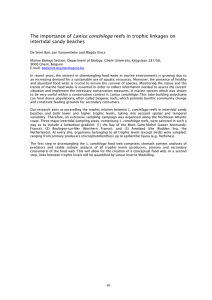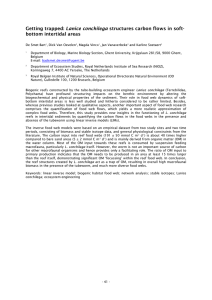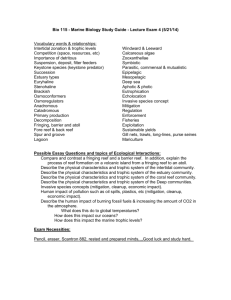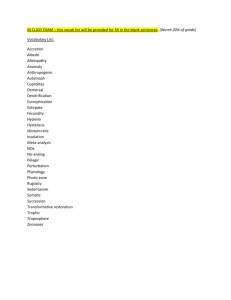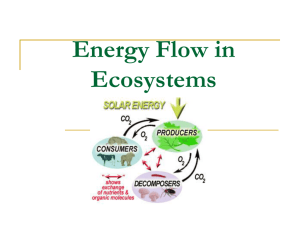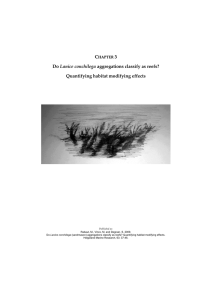Lanice conchilega The importance of reefs in trophic linkages on intertidal sandy beaches
advertisement
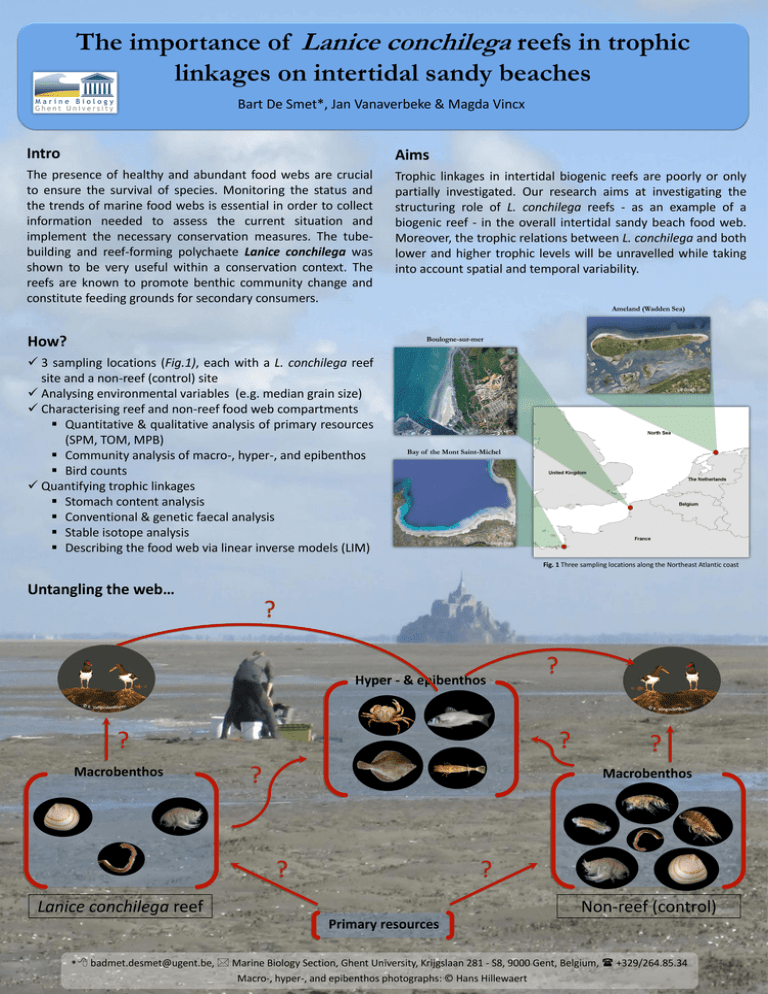
The importance of Lanice conchilega reefs in trophic linkages on intertidal sandy beaches Bart De Smet*, Jan Vanaverbeke & Magda Vincx Intro Aims The presence of healthy and abundant food webs are crucial to ensure the survival of species. Monitoring the status and the trends of marine food webs is essential in order to collect information needed to assess the current situation and implement the necessary conservation measures. The tubebuilding and reef-forming polychaete Lanice conchilega was shown to be very useful within a conservation context. The reefs are known to promote benthic community change and constitute feeding grounds for secondary consumers. Trophic linkages in intertidal biogenic reefs are poorly or only partially investigated. Our research aims at investigating the structuring role of L. conchilega reefs - as an example of a biogenic reef - in the overall intertidal sandy beach food web. Moreover, the trophic relations between L. conchilega and both lower and higher trophic levels will be unravelled while taking into account spatial and temporal variability. How? Ameland (Wadden Sea) Boulogne-sur-mer 3 sampling locations (Fig.1), each with a L. conchilega reef site and a non-reef (control) site Analysing environmental variables (e.g. median grain size) Characterising reef and non-reef food web compartments Quantitative & qualitative analysis of primary resources (SPM, TOM, MPB) Community analysis of macro-, hyper-, and epibenthos Bird counts Quantifying trophic linkages Stomach content analysis Conventional & genetic faecal analysis Stable isotope analysis Describing the food web via linear inverse models (LIM) © Google Earth © Google Earth Bay of the Mont Saint-Michel © Google Earth Fig. 1 Three sampling locations along the Northeast Atlantic coast Untangling the web… ? Hyper - & epibenthos ? Macrobenthos ? ? ? ? Macrobenthos ? ? Lanice conchilega reef Non-reef (control) Primary resources * badmet.desmet@ugent.be, Marine Biology Section, Ghent University, Krijgslaan 281 - S8, 9000 Gent, Belgium, +329/264.85.34 Macro-, hyper-, and epibenthos photographs: © Hans Hillewaert
